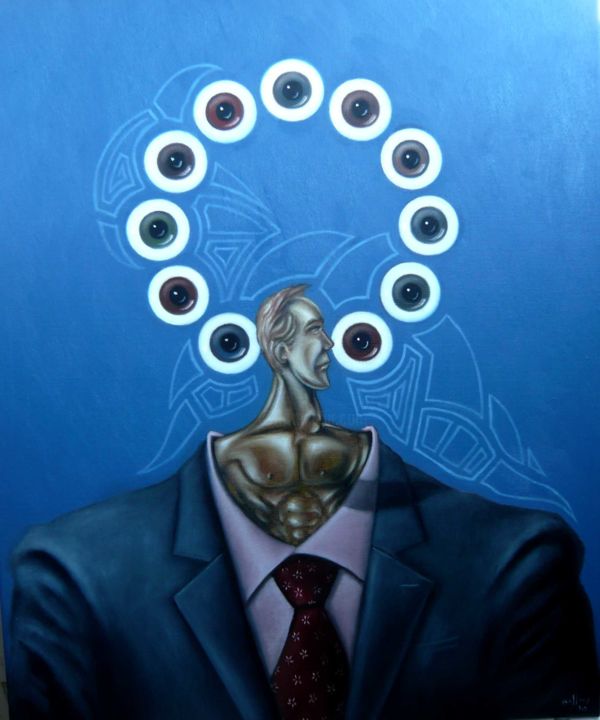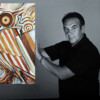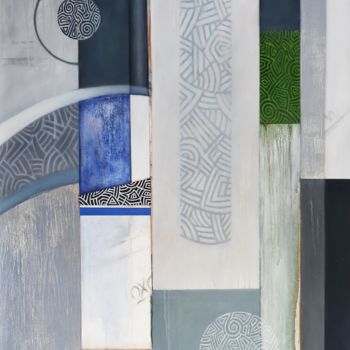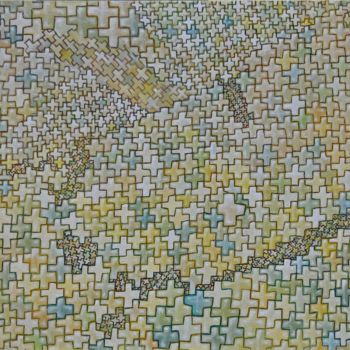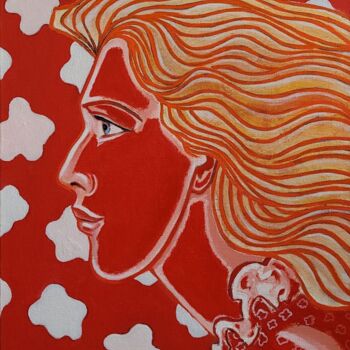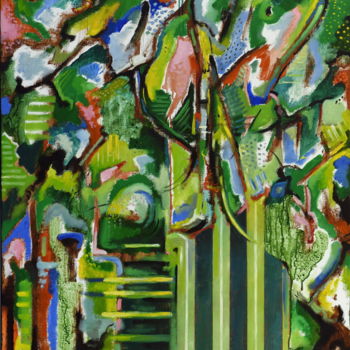U.E. (2010) Painting by Pascal Buffard
Sold by Pascal Buffard
-
Original Artwork (One Of A Kind)
Painting,
Oil
on Linen Canvas
- Dimensions Height 28.7in, Width 23.6in
- Framing This artwork is not framed
**
L'histoire du drapeau remonte à l'année 1955. À cette époque, l'Union européenne n'existait que sous la forme de la Communauté européenne du charbon et de l'acier et n'était constituée que de six États membres. Cependant, un autre organisme rassemblant un plus grand nombre de membres, le conseil de l'Europe avait été créé plusieurs années auparavant; celui-ci veillait à défendre les droits de l'Homme et à promouvoir la culture européenne.
Le Conseil de l'Europe cherchait un symbole pour le représenter. Après maintes discussions, il a adopté le motif actuel : un cercle de douze étoiles dorées sur fond bleu. Dans différentes traditions, douze est un chiffre symbolique représentant la complétude. Il correspond aussi bien entendu au nombre de mois de l'année et au nombre d'heures sur le cadran d'une montre. Quant au cercle, il est entre autres un symbole d'unité.
Le Conseil de l'Europe a ensuite invité les autres institutions européennes à adopter le même drapeau, et en 1983, le Parlement européen a opté pour cet emblème. Finalement, en 1985, le drapeau a été adopté par tous les chefs d'État et de gouvernement de l'UE comme l'emblème officiel de l'Union, qui à cette époque s'appelait les Communautés européennes.
Depuis le début de l'année 1986, le drapeau sert de symbole à toutes les institutions européennes.
The history of the flag goes back to the year 1955. At that time, the European Union existed only in the form of the European Coal and Steel Community and was made up only of six Member States. However, another organization gathering a greater number of members, the Council of Europet created several years before; this one took care to defend the human rights and to promote the European culture.
The Council of Europe sought a symbol to represent it. After many discussions, it adopted the current reason: a circle of twelve stars gilded on blue bottom. In various traditions, twelve is a figure symbolic system representing the completeness. It corresponds as well heard to the number of months of the year and the number of hours on the face of a watch. As for the circle, it is inter alia a symbol of unit.
The Council of Europe then asked the other European institutions to adopt the same flag, and in 1983, the European Parliament chose this emblem. Finally, in 1985, the flag was adopted by all the heads of state and government of the EU like the official emblem of the Union, which at that time was called the European Communities.
Since the beginning of the year 1986, the flag is used as symbol at all the European institutions.
Related themes
Pascal Buffard, painter and photographer, was born in 1961. His passion for art led him to take advertising and visual communication courses at EMSAT in Paris, where he acquired essential skills in the field. artistic. Currently, he lives and works in Charenton-le-Pont, but it is in Charente-Maritime, his homeland, that he mainly exhibits.
His artistic work addresses current issues with a critical eye, sometimes tinged with scathing humor. He explores themes such as overpopulation, wealth sharing, reality shows and disinformation through his series “Regards”. The big eyes present in his works actually symbolize cameras, highlighting the notion of seeing and being seen, as well as the issues of surveillance and voyeurism that characterize our modern society.
Pascal prefers to work in oil, using the technique of solvent removal for his abstractions. His portfolio includes numerous exhibitions, both personal and group, where he has won awards and attracted media attention. His works are part of numerous private collections, as well as private and public corporate collections. His artistic commitment allows him to express his vision of the world and to provoke reflection in those who contemplate his creations.
-
Nationality:
FRANCE

- Date of birth : 1961
- Artistic domains:
- Groups: Contemporary French Artists

